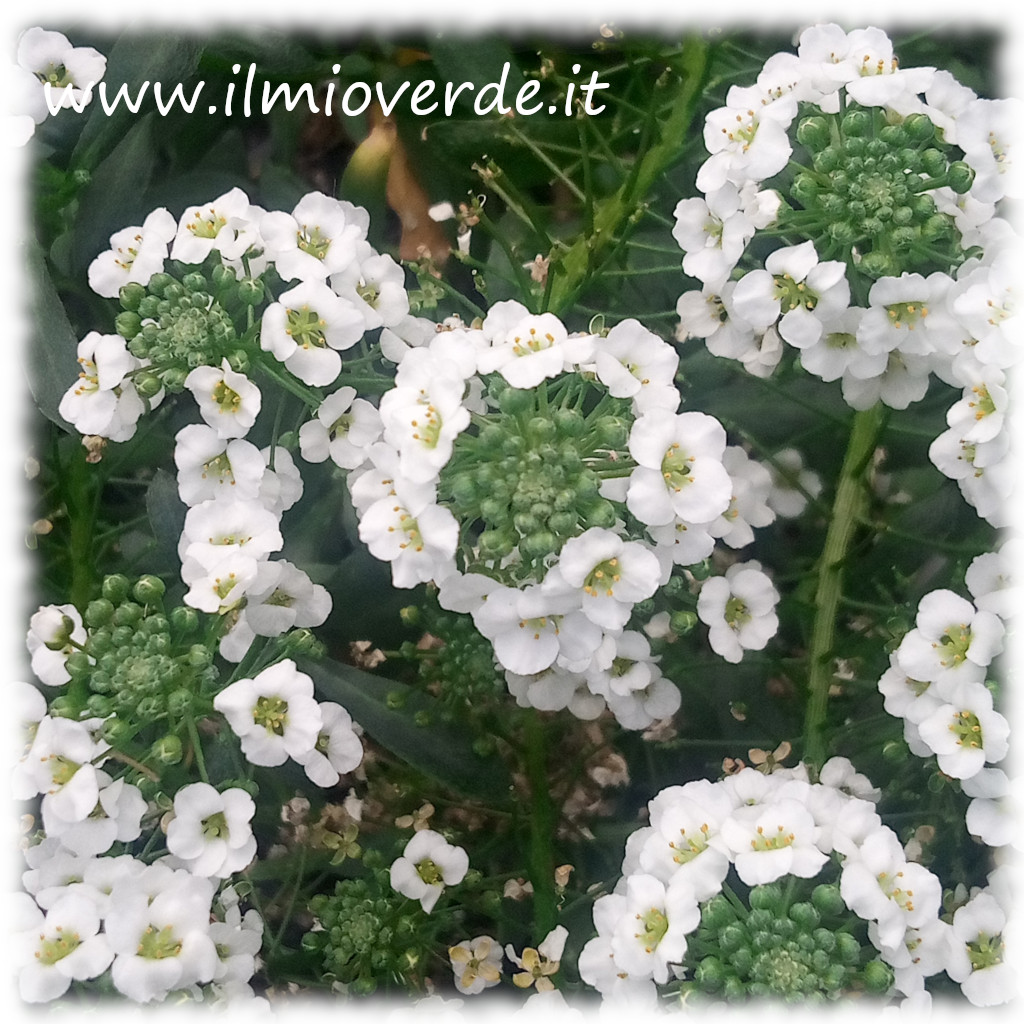Lobularia maritima
The genus Lobularia derives from the Latin “lobulus,” a diminutive of “lobus,” referring to the lobed shape of the fruit. The specific epithet maritima indicates the original natural habitat, which is coastal areas. The species was originally described by Linnaeus as Alyssum maritimum and later reclassified by Desvaux.
Scientific Classification
- Kingdom: Plantae
- Clade: Angiosperms
- Clade: Eudicots
- Order: Brassicales
- Family: Brassicaceae
- Genus: Lobularia
- Species: Lobularia maritima
Description
Lobularia maritima is a perennial herbaceous plant, commonly grown as an annual in temperate regions. It reaches a height of between 10 and 30 cm. The plant has a spreading or prostrate habit, with slender, branched stems that are often lignified at the base. The leaves are alternate, simple, and either linear or spoon-shaped, measuring 1–4 cm in length, with a grey-green colour.
The flowers are hermaphroditic and arranged in dense racemose inflorescences. Each flower consists of four white petals, sometimes pink or lilac in some horticultural varieties. Pollination is entomophilous, aided by the intense sweet fragrance produced by the flowers.
Characteristics
- Flowering: Prolonged from spring to autumn, with peaks in the spring months.
- Roots: Taproot and shallow.
- Fruits: Small, rounded siliques containing numerous tiny seeds.
Habitat and distribution
It is native to the coastal regions of the Mediterranean and the Canary Islands. It has naturalised in many temperate regions with a mild climate. It grows spontaneously in coastal environments, rocky areas, slopes, and disturbed environments.
Environmental requirements
- Climate: Prefers mild climates. Sensitive to prolonged frost.
- Exposure: Prefers sunny positions; tolerates partial shade.
- Soil: Prefers sandy or gravelly, well-drained soils; tolerates poor and saline soils.
- Watering: Moderate; tolerates brief periods of drought.
- Fertilisation: Does not require heavy fertilisation; a moderately fertile substrate is sufficient.
Reproduction
Propagation is mainly by seed. Sowing can be done in spring or autumn in areas with a mild climate. Germination is rapid (7–14 days) at temperatures between 15 °C and 20 °C. The plant self-seeds easily under favourable conditions.
Diseases and pests
- Diseases: Sensitive to root rot in cases of waterlogging. It can exhibit powdery mildew in conditions of high humidity.
- Pests: Occasionally subject to attacks from aphids and thrips.
It is mainly used as an ornamental plant for borders, flowerbeds, dry stone walls, rock gardens, and containers. It promotes biodiversity by attracting pollinating insects.
Immagine di Davide Giuseppe Zannini
